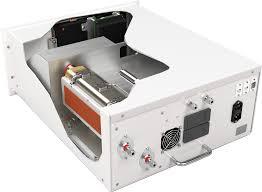FTIR Gas Analyser Market Pain Points Slowing Adoption and Growth Potential
The FTIR gas analyser market is a vital segment of the environmental and industrial monitoring industry. Known for their ability to detect and measure multiple gases simultaneously with high precision, FTIR analysers are widely used across sectors like power generation, chemicals, automotive, pharmaceuticals, and environmental safety.
However, despite their technological strengths and growing demand for emission monitoring, FTIR gas analysers face several critical pain points that hinder broader market penetration. From high initial costs and operational complexity to maintenance challenges and limited awareness in emerging markets, these barriers create friction in an otherwise promising market. This article explores the key challenges impacting the FTIR gas analyser market and what it means for future growth.

High Initial Cost of Acquisition
One of the most significant barriers in the FTIR gas analyser market is the high upfront cost of equipment. FTIR systems involve sophisticated components such as infrared light sources, detectors, beam splitters, and advanced signal processors. These elements make the analysers relatively expensive when compared to simpler gas detection technologies.
For many small to mid-sized enterprises, particularly in price-sensitive markets, the capital investment required for FTIR analysers can be prohibitive. While long-term operational efficiency and accuracy are undeniable, the steep initial cost often deters first-time buyers or smaller facilities from adopting the technology.
Complexity in Installation and Operation
FTIR gas analysers, though accurate and reliable, often require specialized knowledge for installation, calibration, and ongoing use. Unlike plug-and-play gas sensors, these systems involve complex optical alignment, software configuration, and integration with existing process control systems.
This operational complexity can lead to longer installation times, increased training requirements, and the need for experienced technicians. Facilities lacking in-house expertise may find it challenging to manage these analysers without third-party support, thereby increasing the total cost of ownership and introducing logistical hurdles.
Maintenance and Calibration Challenges
Another pain point for users is the regular maintenance and calibration that FTIR analysers require to maintain accuracy over time. These systems are sensitive to environmental conditions such as temperature fluctuations, vibration, and dust. Periodic calibration with certified gas mixtures and optical cleaning are necessary to ensure reliable performance.
In industries with harsh or variable environments, maintaining optimal conditions for FTIR instruments can be difficult. Moreover, the cost and downtime associated with calibration procedures may discourage end users who prioritize low-maintenance solutions.
Limited Penetration in Emerging Markets
Despite growing global awareness of environmental concerns, FTIR gas analysers still face limited adoption in developing economies. This is largely due to a combination of high costs, lack of technical expertise, and insufficient regulatory enforcement of emissions standards.
In regions where environmental compliance is either loosely monitored or cost-sensitive alternatives are available, FTIR technology struggles to gain traction. Market penetration is further constrained by the absence of robust service and support infrastructure in remote or underserved locations.
Data Interpretation and Integration Issues
While FTIR analysers can collect large volumes of data across multiple gas channels, interpreting that data accurately requires expertise in spectroscopy and chemical analysis. For end users unfamiliar with the technology, understanding absorption spectra and translating the results into actionable insights can be difficult.
Furthermore, integrating FTIR data into existing supervisory control and data acquisition (SCADA) or enterprise resource planning (ERP) systems is not always seamless. Without user-friendly software interfaces or standardized protocols, many users face delays and inefficiencies in leveraging the full potential of FTIR measurements.
Regulatory Uncertainty and Regional Disparities
Inconsistent environmental regulations across countries and regions create further uncertainty in the market. While developed economies enforce strict emissions monitoring norms, many developing regions lack comprehensive policies or fail to implement them effectively. This regulatory inconsistency limits the global standardization of FTIR usage and causes hesitation among buyers who are unsure of long-term compliance needs.
Additionally, shifting political priorities or economic downturns can delay the implementation of air quality initiatives, thereby stalling procurement decisions for FTIR systems in the public sector.
Competitive Pressure from Alternative Technologies
FTIR analysers face competition from other gas detection methods such as non-dispersive infrared (NDIR), electrochemical sensors, and newer techniques like laser-based spectroscopy. These alternatives may not offer the same multi-gas detection capabilities, but they are often simpler, cheaper, and easier to operate.
For applications requiring detection of only one or two gases, users may opt for these alternatives, reducing the addressable market for FTIR systems. Additionally, ongoing innovation in compact and low-cost technologies continues to challenge FTIR’s market position in price-sensitive applications.
Conclusion
The FTIR gas analyser market holds immense potential thanks to its precision, versatility, and ability to support real-time multi-gas analysis. However, it is equally burdened by several pain points that limit widespread adoption. High initial costs, technical complexity, maintenance demands, and regulatory ambiguity collectively restrict market expansion.
To overcome these challenges, manufacturers must focus on cost optimization, user-friendly design, improved customer training, and scalable solutions for emerging markets. Likewise, regulators and industry stakeholders must work together to create consistent, enforceable standards that support the deployment of advanced gas analysis technologies like FTIR.
Only by addressing these pain points head-on can the FTIR gas analyser market achieve its full potential and contribute effectively to a cleaner, safer, and more compliant industrial future.
- Art
- Causes
- Crafts
- Dance
- Drinks
- Film
- Fitness
- Food
- Games
- Gardening
- Health
- Home
- Literature
- Music
- Networking
- Other
- Party
- Religion
- Shopping
- Sports
- Theater
- Wellness


